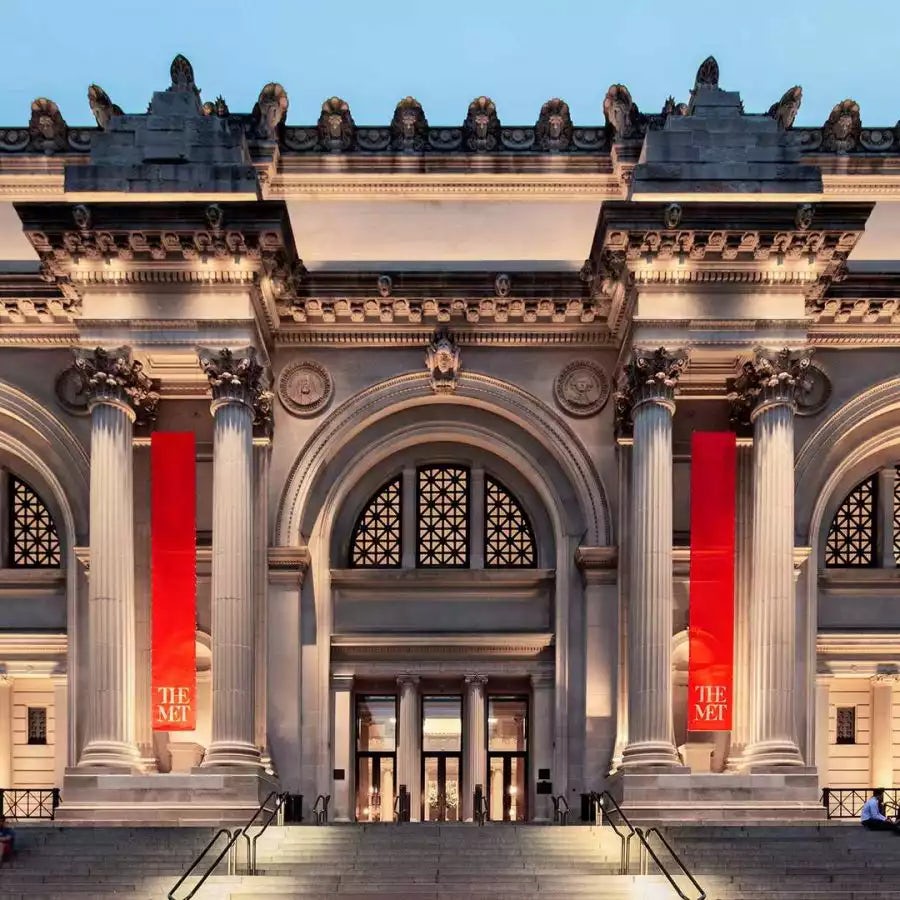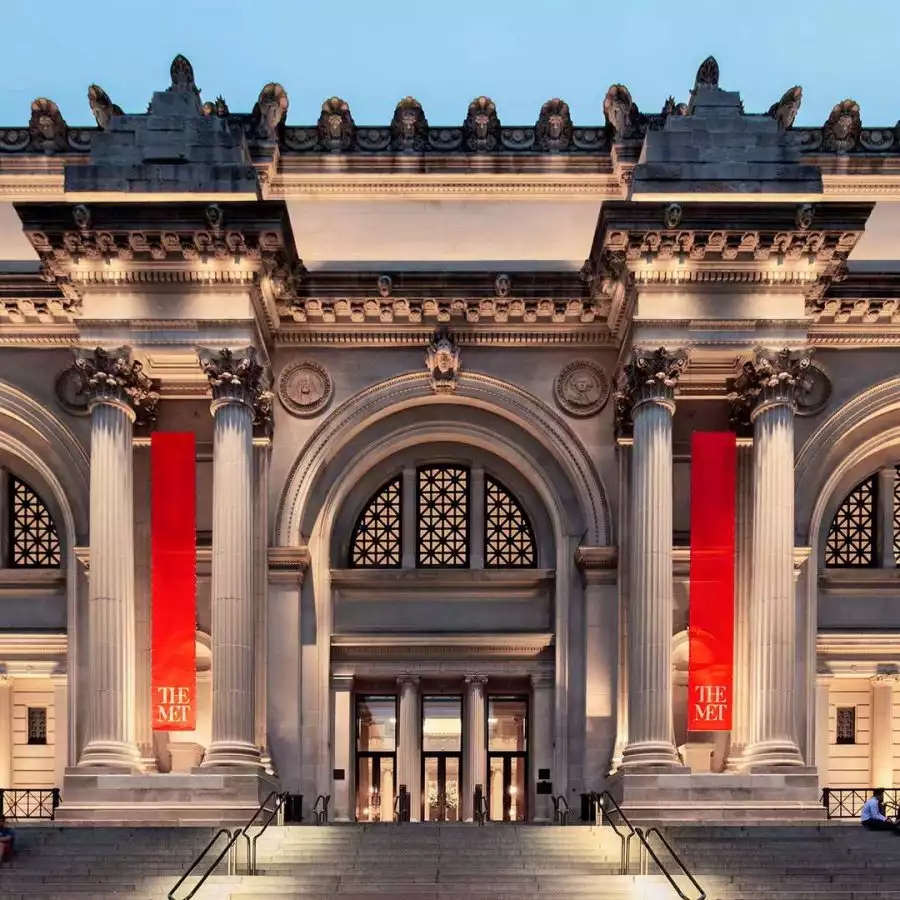Despite a year of unprecedented setbacks, New York City’s most famous museum is undeterred in providing visitors with unrivalled exhibitions and galleries. Among its impressive current programme is the flagship Making The Met, 1870–2020, an an immersive, thought-provoking journey through the history of one of the world’s preeminent cultural institutions on its 150th-anniversary year.
Featuring more than 250 superlative works of art of nearly every type, from visitor favourites to fragile treasures that can only be displayed from time to time. Organised around transformational moments in the evolution of the Museum’s collection, buildings, and ambitions, the exhibition reveals the visionary figures and cultural forces that propelled The Met in new directions since its founding. Rarely seen archival photographs, engaging digital features, and stories of both behind-the-scenes work and the Museum’s community outreach enhance this unique experience.
This resilience is characteristic of the Met, the largest and most popular art museum in the country (with a staggering 2.2 million square feet of space accommodating its more than 2 million works of art and over 7 million visitors every year) – an institution that has survived peaks and troughs since its beginning.
In light of its historic anniversary, DDW takes a deeper look at this cultural stalwart’s rich history (and offer some interesting facts along the way that you can bring out at dinner parties to impress your guests):
The Met was originally smaller, located somewhere else, and looked completely different
In 1870, a group of enlightened financiers, philanthropists, artists, and art aficionados took the plunge and created an institution that would bring art and its education to the public in America.
As America grew in wealth during the latter part of the 19th century, so did its interest in supporting the arts. The upper classes, following in the example of their European predecessors, began to patron emerging artists and amassing important collections of classical masters.
Alongside private collections, philanthropists began to fund the construction of important cultural buildings such as the future Metropolitan Museum of Art. Indeed The Met began life as a much smaller building on 681 Fifth Avenue with 174 European paintings and a Roman sarcophagus (that is still on display), kindly provided from the personal collection of the railroad executive, John Taylor Johnson. The small museum launched with the ambition to share the culture and enlightenment of the arts to the general public.
Not long after, the collection outgrew its cramped quarters, forcing the museum to pack up and find temporary residence in the Douglas Mansion on West 14th Street, before finally finding its permanent home on 1000 Fifth Avenue, its main building completed in 1879.
Once characterised by a red-brick façade, the original gothic structure designed by Jacob Wrey Mould and Calvert Vaux (who helped design Central Park), is barely visible as it is surrounded by modern extensions to the museum. However, its Robert Lehman wing still contains its original west façade.
What is also important to note is that the Fifth Avenue of the late 19th-century was completely different to its current gilded reputation and how it looks now. The Met was completely surrounded by farmland once it had found its permanent home, with Edith Wharton going so far as to describe its remoteness as “mouldered in unvisited loneliness”.
The Met has a resident florist
Every week without fail, Remco van Vliet brings out five grand, towering bouquets that decorate the Great Hall. This Dutch florist, whose family has been in the flora and fauna business for three generations now, creates bouquets for the museum that go up to 10-12 feet high.
After Van Vliet had emigrated to America at the age of 18, he was eventually taken under the wing of Chris Giftos, the previous in-house floral designer, who had been on the hunt for a protégé. They came to work as a team for seven years, until the position was passed on to him when Giftos retired.
Currently, Van Vliet has also lent a hand in creating bouquets for events held in the Met’s Egyptian wing, where they can stretch up to 20 feet within this lofty part of the museum.
Interestingly, his bouquets often take inspiration by the museum’s art collection, citing famous Dutch flower paintings that display “botanical impossibilities back when they were painted,” but that he imaginably helps bring to life in this day and age.
Lila Acheson Wallace, heiress to the Readers Digest fortune, donated the grand flower pots in 1970, as she wanted visitors to be greeted with fresh flowers.
The Met has more on offer than its famous paintings
While one could not discourage you from seeing Claude Monet’s glorious Bridge Over A Pond of Water Lilies, Vincent van Gogh’s Self-Portrait, or even the triumphant depiction of Washington Crossing the Delaware, there is more to the Met than its painting galleries.
The Met’s Arms and Armour collection has around 14,000 objects from around the world and different periods, including dynastic Egypt, the Roman Empire, and even armour that belongs to Henry VIII of England, Henry II of France, and Holy Roman Emperor Ferdinand I.
Additionally, the museum also stores a number of prized artifacts that are worth seeing. The Antioch Chalice, for one thing, dates back to 6th century Byzantium, and was even thought to be the Holy Grail at one point.
Not as ancient but still worthy of note, the museum also has in its collection pieces of furniture made for, and certainly adored by, Marie Antoinette; as well as the world’s oldest surviving piano, among the museum’s 5000 instruments, dating back to the early 18th century and created by the man who invented the piano himself, Bartolomeo Cristofari.
The Anna Wintour Costume Center houses the Costume Institute, a unique collection that cannot be missed, especially for those with a love of fashion. With over 35,000 costumes and accessories, it has plenty to showcase through temporary exhibitions every year, centring around famous designs by luminaries such as Coco Chanel, Yves Saint Laurent, and Gianni Versace, alongside famous style icons such as Jacqueline Kennedy Onassis .
Thieves have targeted the museum in the past
One day in 1979, a 5th-century sculpture of Hermes, the Greek god and messenger, was pulled from a wooden pedestal amid the hubbub of a Tutankhamun exhibition and carried right out. Valued at $150,000, it was subsequently reported stolen but its whereabouts could not be traced. Although it was eventually found five days later and in relatively good condition, there was a mysterious addition of a heart carved above the right eye, leading police to speculate that it was stolen as a Valentine’s Day gift. Indeed, a heartfelt gesture for the recipient, but not so welcome by the art conservators.
Around this time, there was also a 3,000 year-old gold ring of pharaoh Ramesses VI that was stolen with a wire coat-hanger by two teenagers, as well as two Celtic coins and five pieces of early Christian jewellery that a Met employee thought they would get away with.
The Met has many tales of theft that there was even a book written about it by a former chief security officer at the museum, John Barelli, aptly called Stealing the Show.
The Met has a mascot, and it is a bright blue hippopotamus
The endearingly named William the Hippo is a small blue hippopotamus that comes all the way from Ancient Egypt.
Ancient Egyptians both loved hippos as signs of protection, life and regeneration and feared them, due to their large size and formidable ability to kill anyone that stands in their path. This duality led to faience hippos to be often placed in tombs with their legs broken off to guarantee the death’s rebirth in the afterlife, and ensure they would not become destructive forces that magically came to life.
This specific faience hippo was located in the outer chambers of a tomb, with three of its legs broken (now repaired). William later came to bear his name through a 1931 humour magazine that perceived him as an oracle.
The museum has its own fully built ancient temple
The Temple of Dendur, is an Ancient Egyptian temple from the age of Roman Emperor Augustus, circa 10 B.C.. Aside from boasting an ancient and rich background, the temple itself has an interesting story of its journey to the Met’s collection.
In 1963, the temple was dismantled and moved to another location in order to save it from rising waters nearby at the behest of the First Lady, Jacqueline Kennedy. Egypt decided to gift it to the Americans two years later as thanks, where it now stands in the museum as the only complete Egyptian temple in the Western world.
UP NEXT: Coffee table books for inspiration


